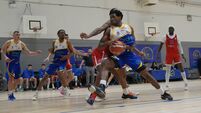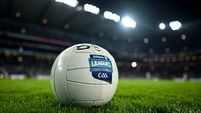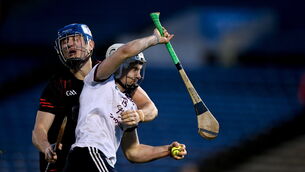Who needs snow to host a Winter Games?

This occurred when the Winter Olympics was awarded to Beijing, rather than Almaty of Kazakhstan, for 2022.
Why is this remarkable? For several reasons, the most obvious being that I am informed by those who know that it barely snows in Beijing.
There are other disadvantages, such as China’s less than stellar record on human rights, though that didn’t seem to be much of a drawback with the summer Olympics being held there; neither is there any great tradition of winter sports in the country.
The reason I include the word ‘great’ in that sentence is that apparently skiing is one of the pastimes embraced by the wealthy in China, though it is not an option for the vast majority of the population.
Still, though, you’d imagine that as a drawback, simply not having snowwould have been a bit of a deciding factor. The Chinese position is simply that they’ll provide artificial snow, and in a funny way, because we now seem to live in a world of such intelligence-insulting contradictions — black-is-white, war-is-peace, Irish-Water-works — that that’s almost plausible (“You know, the Chinese are going to make snow for the Winter Olympics.” “Fair enough.”).
The good people of Almaty are not happy, as you might imagine. They could only provide a few paltry counter-proposals to the Chinese bid: namely that they have decades of experience in the winter sport business, their infrastructure is suited to a relatively small-scale Games and . . . they have snow.
Apparently the Kazakh delegation were quite reliant on this point and stressed it time and time again.
In the world we live in, clearly they’d have been better off saying, “Well, we don’t have snow, we got rid of all of that last week, and frankly we don’t see it as being much of a disadvantage.”
Developments over the weekend may influence our perception of those events. We were informed rather breathlessly that doping tests cast a shadow over many of the medals won by athletes at major international meetings in recent years (in other news, grass is green).
Again with the doublethink: we can accept with one portion of our brains that performance-enhancing drugs are part and parcel of modern sport, yet we can also somehow register some kind of surprise when this is proven. How can this be done? Easy. Black is white. War is peace. Irish Water works.
The special lure of the great Roy Race
The Premier League begins soon. Don’t worry, I’ll be in this cave in the Nagle Mountains for the duration, it won’t have any impact on me.
What will have an effect on me is the recent publication in paperback of the sports autobiography of the century, if not the millennium.
A tale of love, loss, and the unfortunate loss of a foot, it’s the life story of one of the most famous English sportsmen of all time, a man who was not quite a man but somehow more than a player.
I refer of course to Roy Race.
You probably have to be of a certain age to appreciate the hold the great man exerted. This isn’t Roy’s first appearance in the Biography section of your local bookshop, of course. A few years ago there was an unauthorised biography, while this is the authorised version.
I’ve never read the unauthorised book. Some heroes you need to keep the way you remember them.
Schooled in the art of running
I enjoyed a chat last week with Ed Caesar, who’s written the outstanding Two Hours, a book about the quest to run a marathon in . . . two hours or less, which has become a near-mythical barrier, much like the four-minute mile. Until Roger Bannister broke that record back in 1954 there were serious suggestions that someone could die if they managed the mile in under four minutes, and while the speculation isn’t that lurid when it comes to the effects of running a two-hour marathon, some experts feel it just can’t be done.
You can read the interview shortly here, but one nugget from the book was just too good to keep. Much of Caesar’s book centres on the extraordinary athletes of east Africa, both their modern training methods and traditional advantages, and the story of Haile Gebrselassie is one of the examples. One of the greatest distance runners of all time, Gebrselassie built a formidable base of stamina as a boy, running six miles to school every day — and six miles back.
As a grown man and multiple Olympic gold medal winner, however, that 12-mile round trip, completed all those times as a schoolboy runner, left an indelible mark. Gebreselassie always ran with his left arm bent upwards at the elbow, the legacy of carrying his schoolbooks for all those hundreds of miles.
I’m on team Gore in Best Of Enemies
No apologies for the movie yours truly is waiting to see more than any other this year — Best Of Enemies, the documentary detailing the war ofwords between William F. Buckley and Gore Vidal back in the sixties innow-famous televised debates.
I’m on Team Gore here. The man who once owned a house in Schull has always been a big hero in this corner, particularly for his ability to come out on top in more or less any exchange of verbals.
Example? Vidal slashed a Norman Mailer book to pieces once in a review, only for Mailer to hit him a box the next time they met.
Vidal’s response? “Once again, words fail Norman Mailer.” Seconds out.











